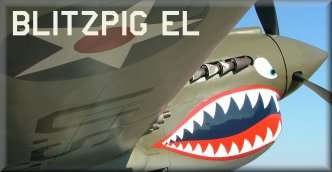
 |
|
|
|
#1
|
|||
|
|||
|
Quote:
Yeah, early P-47's were called razorbacks ... because of the rather sharp edged spine behind the canopy. Bubble canopy equipped P-47's, therefore, weren't razorbacks, just jugs. Planes in general before bubble canopies were the norm so (in the west, anyway) there really wasn't so much a a need to distinguish them from the bubble canopied version as much as identifying the new bubble version itself as something new and different. Bubble canopies typically hurt directional stability a bit because of the turbulence (and, in the Mustang, additional canopy height) behind them but not much more, really, than going to a larger prop, let's say from a three blade propeller to a four blade, as when Mustang went from Allison to Merlin. The Mustang, having had both mods, drove work in improving directional stability although the Brits had started work on that issue earlier after testing their first (non bubble) four blade Merlin versions (some interesting test parts there). |
|
#2
|
||||
|
||||
|
The bubble top P51s were also slower than the "razorback" original design as well.
__________________
 Personally speaking, the P-40 could contend on an equal footing with all the types of Messerschmitts, almost to the end of 1943. ~Nikolay Gerasimovitch Golodnikov |
|
#3
|
|||||
|
|||||
|
Quote:
but, apparently, english "razorback" can mean lot of things without accounting for type design ie it's like i called - wrong, in fact, just for simplicity - all planes with bubble tops "without gagrot"... Quote:
yak-1 - Quote:
Quote:
Quote:
and, in total, of course it's all only my opinion, how i understood all these things... |
|
#4
|
|||
|
|||
|
Quote:
Is this a plane with a gargrot? http://www.airwar.ru/image/idop/fww2/yak1/yak1-c6.jpg Is this a plane without a gargrot? http://www.airwar.ru/image/idop/fww2/yak1/yak1-c2.jpg Or, does Gargrot have anything to do with the shape of the canopy at all? Further search makes me wonder if the word doesn't refer to the construction of the cockpit or to an access panel. I can believe that the word is of French origin, since there are lots of borrowed French words in Russian, but I don't think it's related to the word garçon. It might relate to "grotte" - which is French for "cave" (пещера - if Google Translate is right). |
|
#5
|
|||||
|
|||||
|
no problem... i think, mainly, it's my convoluted explanations of not specialist and my strange english...
Quote:
Quote:
Quote:
Quote:
and in fact, for better understanding, just need to find descriptions of type of fuselage, of yak and for example of bf 109... and find about "monocoque" etc on english... Quote:
garcon it's joke - just first word with "gar"... |
|
#6
|
|||
|
|||
|
apparently, if whole my theory not mistake, i think what found second word - "haut" ie high ie высокий + on russian often h reading as г (-аргрот) - haut grotte ie after cabine with canopy high fairing of fuselage...
|
|
#7
|
|||
|
|||
|
Quote:
I could believe turbulence is a factor, though, since a bubble canopy might create a small vortex just behind the bubble, which might cause buffeting of the elevators and horizontal portions of the tail. |
 |
|
|